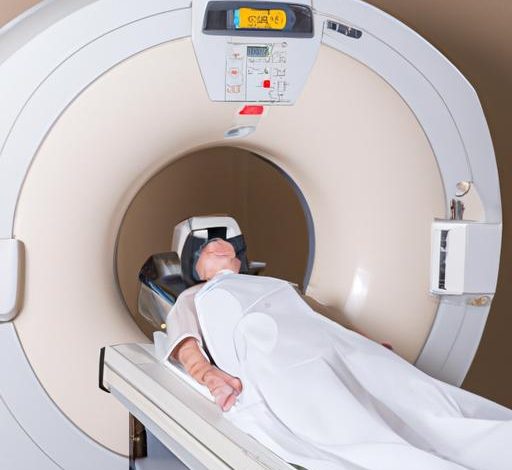What Do Radiology Techs Do: A Comprehensive Guide

Introduction
Radiology techs, also known as radiologic technologists, play a crucial role in the healthcare industry. But what exactly do these professionals do? In simple terms, a radiology tech is a skilled healthcare worker responsible for performing diagnostic imaging procedures such as X-rays, MRIs, and CT scans. These imaging techniques are essential for diagnosing and monitoring various medical conditions, making radiology techs an indispensable part of the medical team.
The importance of radiology techs in healthcare cannot be overstated. They are the ones behind the scenes, capturing detailed images that help doctors make accurate diagnoses and treatment plans. Without radiology techs, medical professionals would be working in the dark, unable to see inside the human body to pinpoint issues. This article will delve deeper into the education, responsibilities, and career outlook of radiology techs, shedding light on this dynamic and vital profession.
Education and Training
Required Education and Certifications for Radiology Techs
Becoming a radiology tech requires a solid educational foundation. Most employers seek candidates with an associate’s or bachelor’s degree in radiologic technology from an accredited program. These programs typically include coursework in anatomy, physiology, patient care, radiation physics, and medical imaging techniques. Additionally, radiology techs must obtain certification from the American Registry of Radiologic Technologists (ARRT) by passing a national exam.
Specializations Within the Field
Radiology techs have the opportunity to specialize in various areas of medical imaging, depending on their interests and career goals. Some common specializations include MRI technologist, CT technologist, mammography technologist, and interventional radiology technologist. Specializing in a specific area allows radiology techs to develop expertise and advance their careers in a focused and specialized field within radiologic technology.
Job Responsibilities
Performing Diagnostic Imaging Procedures
Radiology techs are skilled in operating various imaging equipment to capture detailed images of the body’s internal structures. They perform X-rays, MRIs, CT scans, and other diagnostic imaging procedures with precision and accuracy. Their expertise in positioning patients and adjusting equipment settings ensures that high-quality images are obtained for accurate diagnosis.
Ensuring Patient Safety During Procedures
One of the primary responsibilities of radiology techs is to prioritize patient safety during imaging procedures. They carefully explain the process to patients, ensuring they understand what to expect. Radiology techs also follow strict safety protocols to minimize radiation exposure and prevent any potential risks to patients and themselves.
Collaborating with Radiologists and Other Healthcare Professionals
Radiology techs work closely with radiologists, physicians, and other healthcare professionals to analyze imaging results and provide accurate diagnostic information. They communicate effectively with the medical team, sharing insights from the imaging procedures to assist in creating comprehensive treatment plans for patients. Collaboration and teamwork are essential aspects of a radiology tech’s role in delivering quality patient care.
Equipment and Technology
Overview of Radiology Tech Equipment
Radiology techs work with a variety of high-tech equipment to perform diagnostic imaging procedures. This includes X-ray machines, CT scanners, MRI machines, and ultrasound devices. Each piece of equipment serves a specific purpose in capturing detailed images of the internal structures of the body. Radiology techs must be proficient in operating and maintaining these machines to ensure accurate and clear images for diagnosis.
Importance of Technological Advancements
Staying up-to-date with technological advancements is crucial for radiology techs to provide the best possible care for patients. New technologies in imaging equipment can improve image quality, reduce radiation exposure, and enhance diagnostic capabilities. By continuously learning about and adapting to new technologies, radiology techs can stay at the forefront of their field and deliver the highest standard of care to patients.
Career Outlook
Job Prospects for Radiology Techs
Radiology techs can look forward to a promising career outlook in the healthcare industry. With advancements in medical technology and an aging population requiring more medical services, the demand for radiologic technologists is expected to grow. According to the Bureau of Labor Statistics, the employment of radiologic technologists is projected to increase by 7% from 2019 to 2029, faster than the average for all occupations. This growth is driven by the need for diagnostic imaging for various medical conditions, including cancer and heart disease.
Salary Potential and Benefits
In addition to favorable job prospects, radiology techs can also enjoy competitive salaries and benefits. The median annual wage for radiologic technologists was $62,280 in May 2020, with the top 10% earning more than $89,760. Beyond financial compensation, many employers offer healthcare benefits, retirement plans, and opportunities for career advancement. The rewarding nature of the work, coupled with the potential for growth and development, makes a career as a radiology tech both fulfilling and financially rewarding.
Conclusion: So above is the What Do Radiology Techs Do: A Comprehensive Guide article. Hopefully with this article you can help you in life, always follow and read our good articles on the website: equipment.giadinh.tv
